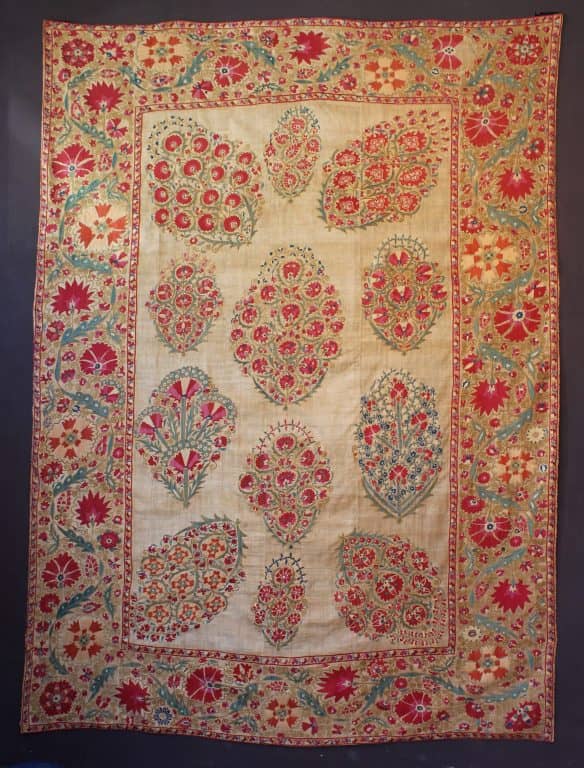Early 19th-century Uzbek Suzani
Description
Early Uzbek Suzani from Nurata in the Emirate of Bokhara, dating to the first half of the 19th century and intended as a dowry piece.
This wonderful silk embroidery on a hand spun cotton cloth is worked in six panels. As was the custom with Suzanis, the panels, usually measuring between approximately 26 and 40 cm in width, were sewn together to form the background material on which a professional drawing woman, or Kalamkash (from Kalam meaning quill), did a free-hand drawing of the design. The panels were then disassembled to be embroidered separately, mostly in basma stitch for the areas and chain stitch for the outlines. With the embroidery complete, the panels were then re-assembled.
This example has the open field design typical of Nurata Suzanis, with twelve bouquets of flowers spread over the field, and no arrangement identical to any of the others. The large number of flower heads in each spray of flowers (often as many as about 50), the quality of the dyes and the texture of the hand spun cotton material all suggest an early date. The field is enclosed by a richly embroidered meandering border, with serrated vines in a light turquoise around large flower heads in a regular sequence of red-pink and light orange.
In the top right-hand corner there is an only partially legible signature, probably a reference to the person or household for whom this Suzani was made (the middle word is ‘sheikh’, the third word starts in ‘rus…’).
This is a beautiful and joyful representative of its kind, and it is in excellent condition. It has one small patch and has been professionally backed.
SOLD
It was published in: Angela Seger-Legge, “My favourite … suzani“. Asian Textiles. Journal of the Oxford Asian Textile Group. Number 72, Spring 2019, pages 13 – 16.

